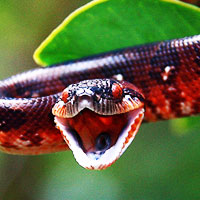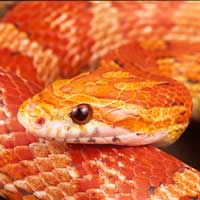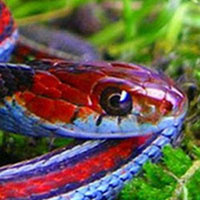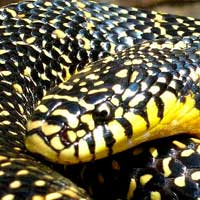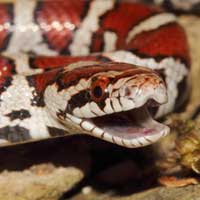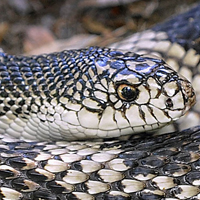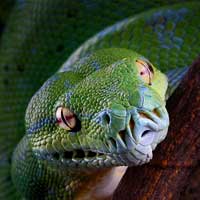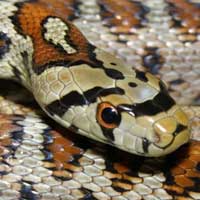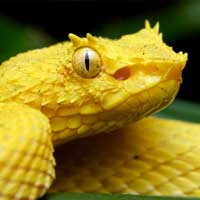Rainbow Boa: A Complete Guide to This Stunning Species
The Rainbow Boa is scientifically named Epicrates cenchria. It belongs to the Boidae family, which includes non-venomous constrictor snakes.
Scientific Name: Epicrates cenchria
Snake Family: Boidae
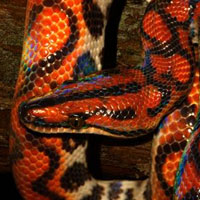
Rainbow Boa: An Overview
The Rainbow Boa (Epicrates cenchria) is a non-venomous snake native to Central and South America. Renowned for its iridescent scales that shimmer in the light, this species is a favorite among snake enthusiasts. Rainbow Boas are medium-sized constrictors, known for their docile temperament and striking appearance. This guide provides a detailed look into their habitat, diet, care, and more.
Exploring the Natural Habitat of the Rainbow Boa
Rainbow Boas are found in a variety of environments across Central and South America, including forests, savannas, and riverbanks. Their adaptability allows them to thrive in both humid and drier conditions, depending on the region.
| Habitat Feature | Description |
|---|---|
| Geographic Range | Central and South America, including Brazil, Colombia, and Venezuela |
| Preferred Environment | Tropical forests, savannas, and riverbanks |
| Climate | Warm and humid, with temperatures ranging from 75-85°F |
What Do Rainbow Boas Eat? Understanding Their Diet
The Rainbow Boa is a carnivorous snake that preys on small mammals, birds, and reptiles in the wild. Replicating their natural diet in captivity is crucial for their health.
- Juveniles: Feed on pinky mice or small lizards every 5-7 days.
- Adults: Feed on medium-sized rodents every 10-14 days.
- Prey Size: Ensure prey is no larger than the snake’s girth to prevent regurgitation.
- Hydration: Provide fresh water for drinking and soaking.
Behavior and Temperament of the Rainbow Boa
The Rainbow Boa is generally docile, making it a great choice for intermediate snake keepers. However, individual behavior can vary, especially in young boas.
- Docile Nature: Most Rainbow Boas are calm and tolerate handling well.
- Activity Level: Crepuscular, most active during dawn and dusk.
- Defensive Behavior: Juveniles may be more defensive, but this usually diminishes with age.
How to Ensure a Healthy and Long Life for Your Rainbow Boa
With proper care, Rainbow Boas can live 20-30 years in captivity. Monitoring their health and maintaining a clean environment are essential for their longevity.
| Health Issue | Symptoms | Prevention |
|---|---|---|
| Respiratory Infections | Wheezing, open-mouth breathing | Maintain proper humidity and temperature |
| Skin Shedding Issues | Incomplete sheds | Provide adequate humidity and hydration |
| Parasites | Visible mites, itching | Regularly clean the enclosure |
Reproductive Traits of the Rainbow Boa
Rainbow Boas are ovoviviparous, giving birth to live young. Breeding them in captivity can be a rewarding challenge for experienced keepers.
- Mating Season: Late winter to early spring.
- Gestation Period: Approximately 5-6 months.
- Litter Size: Typically 10-25 young.
- Breeding Tips: Simulate seasonal changes to encourage mating behavior.
Tips for Handling and Caring for Your Rainbow Boa
Proper handling and care are crucial to ensuring the well-being of your Rainbow Boa. These snakes thrive when their specific needs are met consistently.
- Provide an enclosure with a temperature gradient of 75-85°F and high humidity levels (50-70%).
- Include hiding spots and climbing branches for enrichment.
- Handle gently and limit interactions to reduce stress.
- Clean the enclosure regularly to maintain hygiene and prevent illnesses.
- Monitor their diet and hydration to ensure optimal health.
